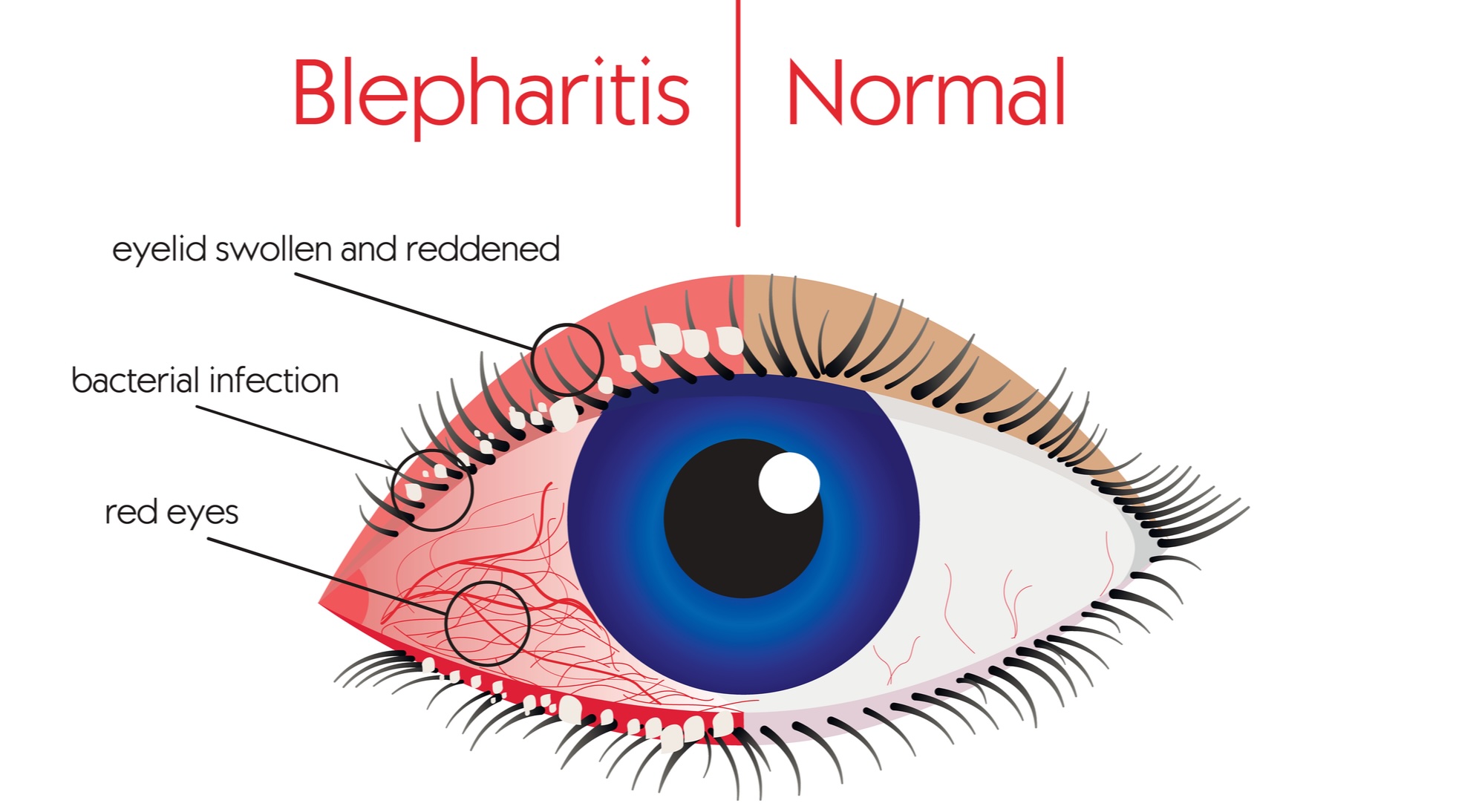Blepharitis is a common condition that causes inflammation of the eyelids, particularly around the edges where the eyelashes grow. Although it’s not usually sight-threatening, it can be uncomfortable and persistent, impacting your quality of life if left untreated.
This blog post will delve into the causes, symptoms, and treatment options for blepharitis, offering insights to help you manage and alleviate this condition.
What Is Blepharitis?
Blepharitis is an inflammatory condition affecting the eyelid margins. It can occur in one or both eyes and is often classified into two main types:
- Anterior Blepharitis: Affects the outer edge of the eyelid near the eyelashes.
- Posterior Blepharitis: Involves the inner edge of the eyelid, where it comes into contact with the eye, often linked to dysfunction of the meibomian glands.
What Causes Blepharitis?
Blepharitis can be caused by several factors, including:
- Bacterial Infections: Overgrowth of bacteria on the eyelids, particularly Staphylococcus, is a common cause.
- Blocked Oil Glands: Dysfunction of the meibomian glands can lead to oil buildup and inflammation.
- Seborrheic Dermatitis: A skin condition causing dandruff-like scaling can affect the eyelids.
- Allergies: Reactions to eye makeup, contact lens solutions, or environmental allergens.
- Mites or Parasites: Tiny mites, such as Demodex, living near hair follicles can contribute to inflammation.
- Rosacea: This chronic skin condition can lead to secondary eyelid inflammation.
Symptoms of Blepharitis
Blepharitis symptoms can vary in severity and may include:
- Red, swollen, or itchy eyelids
- A gritty or burning sensation in the eyes
- Crusty debris or flakes near the base of the eyelashes
- Excessive tearing or dry eyes
- Increased sensitivity to light
- Sticky eyelids, particularly upon waking
- Blurred vision that improves with blinking
Symptoms often flare up periodically, alternating between calm and inflamed phases.
Diagnosing Blepharitis
An eye doctor can diagnose blepharitis during an eye exam by examining your eyelids and assessing your symptoms. In some cases, they may take a sample of eyelid debris to check for bacteria or mites under a microscope.
How to Treat Blepharitis
While there’s no definitive cure for blepharitis, it can be managed effectively with a combination of self-care, medications, and professional treatments:
1. Eyelid Hygiene
Keeping your eyelids clean is the cornerstone of managing blepharitis:
- Use a warm compress to loosen debris and unclog oil glands.
- Gently clean the eyelid margins with diluted baby shampoo, a lid scrub, or a pre-moistened eyelid wipe.
- Perform these steps daily to maintain hygiene and reduce symptoms.
2. Medications
In cases where hygiene alone isn’t sufficient, your doctor may recommend:
- Antibiotics: Topical ointments or oral antibiotics to combat bacterial infections.
- Anti-inflammatory Treatments: Steroid eye drops or ointments to reduce swelling.
- Artificial Tears: To relieve dryness and irritation.
3. Address Underlying Conditions
Treating contributing conditions like seborrheic dermatitis, rosacea, or dry eye syndrome can help reduce blepharitis flare-ups.
4. Dietary Adjustments
A diet rich in omega-3 fatty acids, found in fish or supplements, may improve meibomian gland function and reduce inflammation.
5. Professional Procedures
For persistent or severe cases, eye doctors may recommend:
- Lid Margin Debridement: A professional cleaning of the eyelid edges to remove debris and bacteria.
- Thermal Pulsation Therapy: Helps clear blocked meibomian glands using heat and pressure.
- Intense Pulsed Light (IPL) Therapy: Can improve oil gland function and reduce inflammation.
Preventing Blepharitis
Although blepharitis can’t always be prevented, these steps can reduce the likelihood of recurrence:
- Maintain good eyelid hygiene, even when symptoms subside.
- Avoid using expired or irritating eye makeup.
- Replace contact lenses regularly and follow proper cleaning protocols.
- Minimize exposure to environmental irritants and allergens.
When to See a Doctor
Seek medical advice if:
- Your symptoms persist despite home care.
- You experience significant pain or changes in vision.
- You notice unusual swelling or discharge from the eyes.
Final Thoughts
Blepharitis can be an ongoing challenge, but with proper management and care, it’s possible to minimize its impact on your daily life. By staying proactive and consulting an eye care professional when needed, you can maintain healthier, more comfortable eyes.
Book a home test today
Fill in the form to request a home eye test, and one of our team will be in touch
If you have any questions, please call us on
Our other blogs
